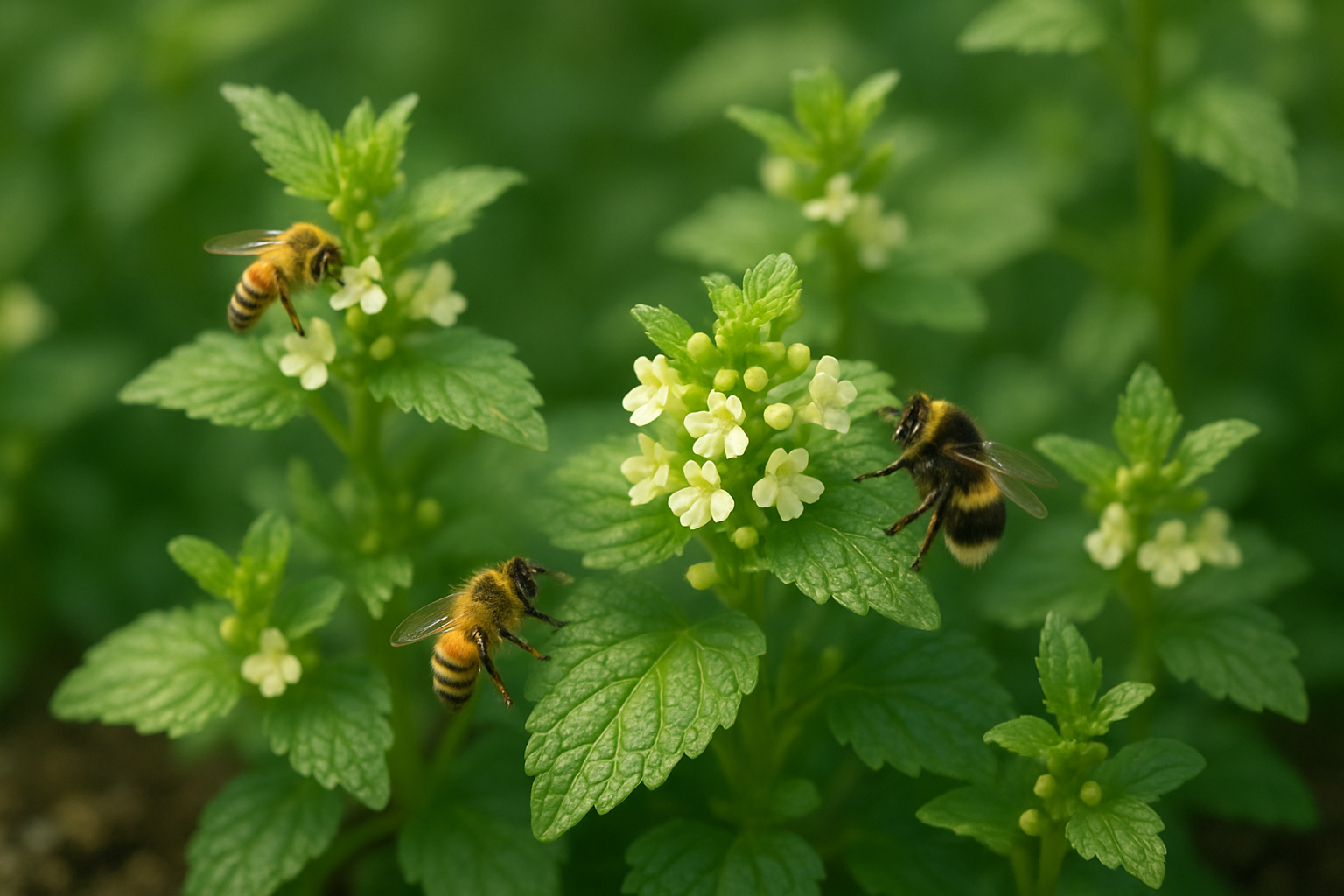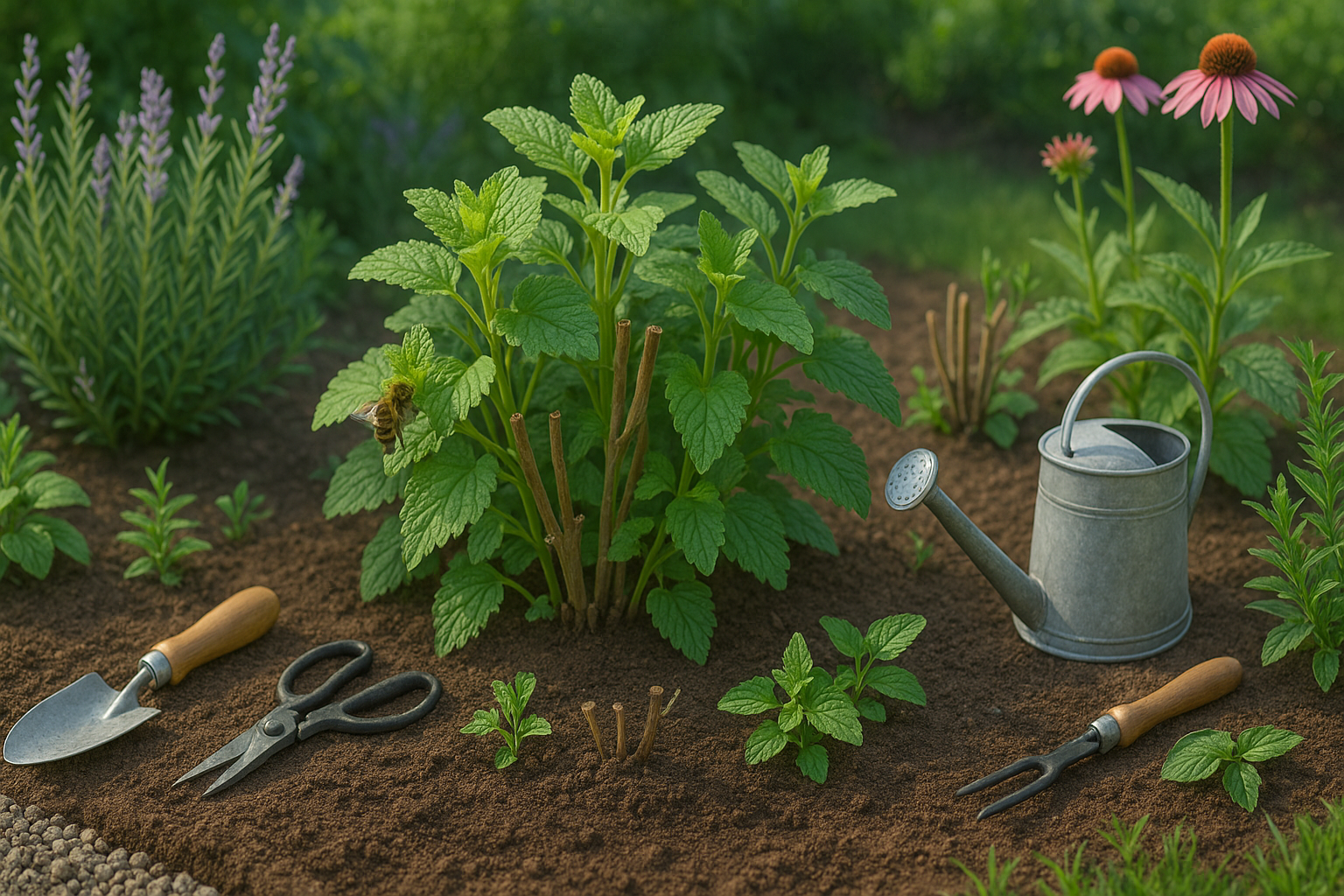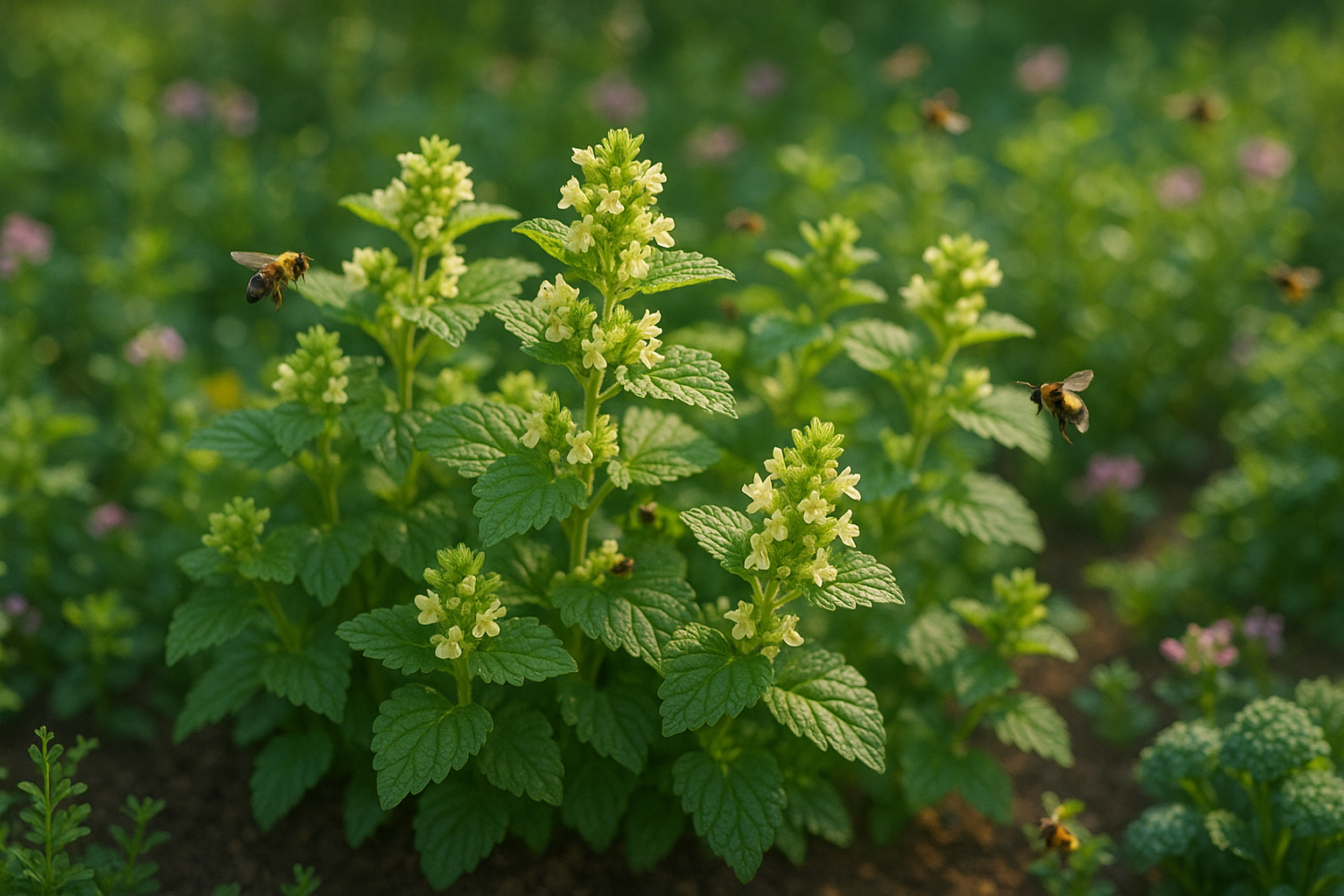What is Lemon Balm and Why It Matters for Pollinators?

Lemon balm (Melissa officinalis) is a fragrant, easy-to-grow garden herb known for its fresh lemon scent and soothing properties. Home gardeners often use its soft, minty leaves for teas, culinary dishes, and homemade balms.
But beyond the kitchen, lemon balm plays an unsung yet vital role in the ecosystem—supporting pollinators, especially bees. Pollinators are crucial members of any garden, helping fruits, vegetables, and flowers reproduce by transferring pollen between plants. Without them, our gardens would be far less productive, and overall biodiversity would decline.
Lemon balm matters for pollinators because its small, white blooms are rich in nectar and bloom over a long period, offering a reliable food source from late spring into early fall. Bees—especially honeybees and bumblebees—are particularly attracted to its flowers, drawn by the plant’s strong scent and abundant nectar.
If you want to encourage a thriving pollinator population in your garden, planting lemon balm is a practical choice. Try adding a cluster in a sunny bed near other herbs and vegetables; you’ll not only enjoy its fresh aroma and culinary uses but also support the bees and butterflies that keep your garden blooming year after year.
How Lemon Balm Attracts Bees and Other Beneficial Insects
Lemon balm (Melissa officinalis) is a favorite among gardeners who want to support pollinators. Its clusters of small, white to pale yellow flowers brim with nectar from late spring through summer, making it especially appealing to bees and butterflies. These pollinators are drawn not only by the abundance of nectar but also by the plant’s invigorating lemony scent.
Studies show that bees, especially honey bees and bumblebees, are frequent visitors to lemon balm. In fact, the plant gets its name “Melissa,” Greek for “honeybee,” because of this longstanding relationship. Observations back up what gardeners often notice—bees tend to linger on and revisit lemon balm more than many other herbs.
Some beekeepers even rub lemon balm leaves around new hives to help calm and attract swarms, taking advantage of the plant’s mild sedative properties. This calming effect is believed to reduce stress in bees, making them more likely to stay nearby and pollinate.
By including lemon balm in your garden, you’re not only creating a haven for bees and butterflies but also boosting biodiversity. The plant serves as both food and shelter, attracting a range of beneficial insects. Its lush growth draws predatory insects that naturally help control pests, creating a more balanced and resilient ecosystem.
Planting lemon balm can transform your garden into a vibrant, buzzing hub of life. It gives pollinators a vital boost and helps your other plants thrive through improved pollination.
Growing Lemon Balm for a Pollinator-Friendly Garden

Growing lemon balm (Melissa officinalis) is a fantastic choice for any pollinator-friendly garden, thanks to its sweetly scented leaves and small, nectar-rich flowers that attract bees, butterflies, and other beneficial insects. To give your lemon balm the best start, choose a sunny to partially shaded spot—while it thrives in full sun, it will tolerate light shade, especially in hotter climates.
Well-draining, moderately rich soil is ideal, so consider mixing in compost before planting. Water deeply once or twice a week, allowing the soil to dry slightly between waterings; overwatering can lead to root rot.
For pollinator power, the classic lemon balm variety is excellent, but cultivars like ‘Lemonella’ or ‘Quedlinburger Niederliegende’ offer vigorous growth and a robust scent, both of which help draw in pollinators.
Pair lemon balm with companion plants like lavender, rosemary, and echinacea—this mix not only boosts nectar sources but also creates a lively, buzzing border for your garden.
To keep your lemon balm healthy, snip back leggy growth midseason to encourage bushier plants and more flowers. Regularly remove dead or damaged stems and harvest leaves often; the more you cut, the more it grows.
However, lemon balm spreads enthusiastically—sometimes too much—so plant it in containers or edge it with physical barriers if you want to keep it in check. Pull up unwanted sprouts in spring, and thin mature plants every few years to avoid overcrowding.
By following these tips, you’ll create a thriving patch that delights pollinators without overwhelming your garden.
Benefits of Lemon Balm in the Garden Beyond Pollinators
Lemon balm offers a surprising range of benefits in the garden that go far beyond attracting pollinators. One of its standout qualities is its ability to naturally deter common pests—its aromatic oils confuse or repel mosquitoes, gnats, and some harmful flies, making it a safe, organic choice for protecting vegetable patches.
Beyond just warding off unwanted bugs, lemon balm draws in helpful allies like parasitic wasps, lacewings, and hoverflies, all of which play key roles in keeping aphid populations under control. Some species of butterflies are also attracted to the plant’s subtle flowers, adding beauty and biodiversity to your garden.
Integrating lemon balm helps maintain a balanced ecosystem, limiting the need for chemical pesticides and fostering an environment where beneficial insects thrive. Even as a border plant or intermixed with tomatoes and squash, it supports neighboring crops seamlessly, making it a must-have for gardeners looking to boost plant health and garden resilience with organic, low-maintenance methods.
For best results, consider planting lemon balm near seating areas or garden entryways to benefit from its pest-repelling scent and the increased activity of friendly insects.
Harvesting and Using Lemon Balm Without Harming Bees
If you want to harvest lemon balm while protecting the bees that love its fragrant blooms, timing and technique are key. The best time to harvest is early morning or late evening when bees are less active; during the hottest part of the day, bees are often busy gathering nectar.
Use clean, sharp scissors and snip stems just above a leaf node, making sure to leave plenty of flowers and healthy foliage intact. This allows the plant to regrow and continue providing a nectar source for pollinators. Never take more than one-third of a plant at a time and rotate your harvest between different sections, so bees and other creatures aren’t left with barren patches.
Consider harvesting before peak flowering; the leaves will be full of essential oils, and bees have yet to establish their foraging routine. Lemon balm is a fantastic addition to teas, salads, and desserts, and its leaves can be dried for winter remedies such as calming tinctures or soothing balms.
Always avoid using pesticides or chemicals, which can linger on the plant and harm bees and beneficial insects. By harvesting thoughtfully, you’ll enjoy lemon balm’s benefits while supporting a healthy, biodiverse garden.
Frequently Asked Questions About Lemon Balm and Pollinators
Lemon balm (Melissa officinalis) is a fantastic addition to pollinator-friendly gardens, and many people wonder just how beneficial it is for bees and other insects. One common question is whether the plant produces enough nectar to attract pollinators—fortunately, lemon balm flowers are rich in nectar, providing a reliable food source for honeybees, bumblebees, and even butterflies throughout the summer.
A common misconception is that lemon balm might harm pollinators because it belongs to the mint family, some members of which can be aggressive growers. However, lemon balm itself is completely safe for beneficial insects and does not repel bees or butterflies.
Some gardeners also ask if lemon balm can substitute for other popular bee plants like lavender or bee balm. While it may not bloom as profusely as some dedicated bee plants, it’s an excellent companion in the pollinator garden, especially for continuous blooms and fragrance.
Integrating lemon balm into your planting plan can help diversify nectar sources, so you don’t have to rely on just one type of bee-friendly bloom. Mixing and matching plants is the key to creating the healthiest and happiest pollinator habitat in your yard.
Tips for Creating a Pollinator Paradise with Lemon Balm
Transforming your garden into a pollinator paradise is simple with lemon balm at its heart. This fragrant herb attracts bees and butterflies and thrives best in sunny spots with well-drained soil.
Start by planting lemon balm in clumps, either directly in garden beds or in decorative containers near patios or walkways, making it easy to watch pollinators in action.
Pair lemon balm with other pollinator-friendly plants like lavender, coneflower, and salvia. These plants bloom at different times, providing a continuous buffet for visiting insects.
Try creating layered plantings, with taller flowers at the back and lemon balm near the front for easy access. Regularly remove spent flowers to encourage new blooms and prevent self-seeding from getting out of hand.
Water the plants at the base in the morning to keep foliage healthy and avoid mold. Even if you have limited space, a few pots of lemon balm on a balcony can draw pollinators closer.
Take a moment each day to watch bees, hoverflies, and butterflies as they visit—this daily observation connects you to the rhythms of your garden and helps you spot signs of plant health or which flowers are most popular with your pollinator guests.
